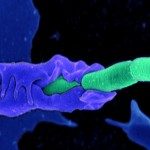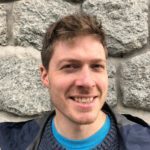Link to Pubmed [PMID] – 29462208
Link to DOI – 10.1371/journal.ppat.1006895
PLoS Pathog 2018 Feb; 14(2): e1006895
Drug resistant HIV is a major threat to the long-term efficacy of antiretroviral treatment. Around 10% of ART-naïve patients in Europe are infected with drug-resistant HIV type 1. Hence it is important to understand the dynamics of transmitted drug resistance evolution. Thanks to routinely performed drug resistance tests, HIV sequence data is increasingly available and can be used to reconstruct the phylogenetic relationship among viral lineages. In this study we employ a phylodynamic approach to quantify the fitness costs of major resistance mutations in the Swiss HIV cohort. The viral phylogeny reflects the transmission tree, which we model using stochastic birth-death-sampling processes with two types: hosts infected by a sensitive or resistant strain. This allows quantification of fitness cost as the ratio between transmission rates of hosts infected by drug resistant strains and transmission rates of hosts infected by drug sensitive strains. The resistance mutations 41L, 67N, 70R, 184V, 210W, 215D, 215S and 219Q (nRTI-related) and 103N, 108I, 138A, 181C, 190A (NNRTI-related) in the reverse trancriptase and the 90M mutation in the protease gene are included in this study. Among the considered resistance mutations, only the 90M mutation in the protease gene was found to have significantly higher fitness than the drug sensitive strains. The following mutations associated with resistance to reverse transcriptase inhibitors were found to be less fit than the sensitive strains: 67N, 70R, 184V, 219Q. The highest posterior density intervals of the transmission ratios for the remaining resistance mutations included in this study all included 1, suggesting that these mutations do not have a significant effect on viral transmissibility within the Swiss HIV cohort. These patterns are consistent with alternative measures of the fitness cost of resistance mutations. Overall, we have developed and validated a novel phylodynamic approach to estimate the transmission fitness cost of drug resistance mutations.

